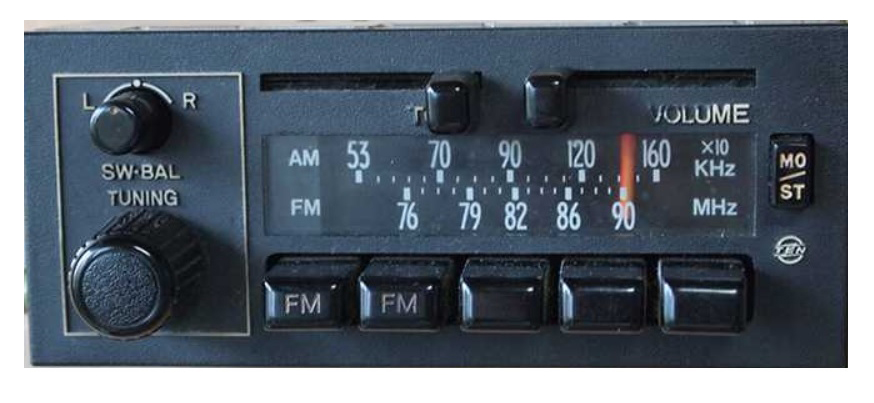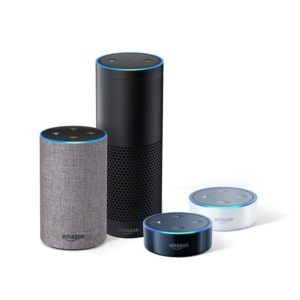Radio is in grave danger of losing its position as the new music discovery leader. As we noted in our study The Alexa Effect, teenagers are already more likely to think first of Spotify and YouTube than radio as the place to hear new music first—and young adults aren’t far behind.
The problem isn’t that radio plays new releases late. The problem is that listeners don’t remember that they first heard that new song on the radio.
Fortunately, you have a colleague at your station that can help combat this image—your engineer.
He (or all too seldom she) can help make sure your listeners discover the artist and title of the new songs they hear from you—and not from Spotify.

Listeners have always wanted radio stations to say what they play. Back when the radio dial was actually a dial, the only way to meet this need was to back-sell every song, which often meant a laundry list of artist and titles since listeners also like long uninterrupted sets of soft rock while they work.
(Sorry—flashback to my AC radio days there.)
Listeners still want to know the artist and titles of songs that catch their ear—hence Shazam—but today’s listeners won’t wait half an hour for your on-air talent to tell them. When listeners use Spotify, Pandora, Sirius/XM or MusicChoice, the artist and title is always available on the screen instantly.
Fortunately, radio technology hasn’t stood still, either. Modern car radios include RDS displays and about half of today’s new cars come standard with HD Radio. Live streaming platforms also have song metadata capability baked in.

Shockingly, even many stations in PPM markets fail to provide their listeners artist and title metadata on their FM signal or on their stream.
Why does metadata matter? Because whether consciously or unconsciously, listeners remember where they first learn about new music. If a listener hears a song on your station, but then learns who sang it on Spotify, then Spotify gets credit in your listener’s mind for introducing her to her favorite new song, not your radio station.
So, at the risk sounding more like This Week in Radio Tech than the Integr8 New Music Research blog, here are five steps to make your metadata available to your audience.
1) Ensure artist and title information is correct and legible in your automation system. Those of us who deal with music professionally have myriad ways of listing song details that are useful to our work, such as
“LAST, FIRST – Title ft. Second Artist”.
However, real listeners expect to see
“First Last featuring Second Artist – Title”.
While matching Mediabase’s format is fine for Selector or MusicMaster, the artist and title information in AutoVault or Wide Orbit should be in a format that listeners comprehend.
2) Transmit Artist and Title information to your RDS and HD Radio encoders. It blows my mind how many stations in big competitive markets don’t bother to provide Title and Artist info to radio displays. There are several ways to convey “now playing” data from your on-air playout system in the studio to the RDS and HD Radio encoders at the transmitter. It might seem daunting, but your engineer knows the different data protocols and transmission options to make it happen. Explain why it matters and you’ll likely find your engineer is happy to embrace the project. If your station doesn’t currently broadcast RDS data, encoders cost as little as $495.
3) Also encode your streaming audio with artist and title information. All streaming audio formats support song metadata integrated with the audio. Ask your engineer to help link your automation to your streaming encoders so artist and title information is available to listeners.
4) Use metadata APIs for third-party players like TuneIn. So you’ve got your streams properly encoded, but your artist and title info is still missing. Many third-party platforms such as TuneIn don’t automatically read the information from your stream, but instead maintain their own database of now-playing information that require sending metadata separately. Ask your engineer to also set up the necessary plugin in your automation or stream encoding software to send metadata to all your streaming platforms.
5) List what you’re playing and what you’ve played on your website. It’s the oldest of the new ways to share the songs you’ve played with your listeners. Not only have listeners come to expect to find information on your website about songs they’ve recently heard, it’s consistently a top reason listeners visit a radio station’s website.
These five tech tips won’t fully do the job unless you also make this programming enhancement:
Teach your listeners where to find artist and title information.
Did you know Alexa will tell you the artist and title of a song, along with the name of the station that’s streaming it?
Your listeners probably don’t know this trick, either.

On the air, share with your listeners how to:
- Ask Alexa and Google Home for the artist and title of the songs you play
- Look on their RDS or HD Radio display in the car to see what’s playing
- Look at the display in their streaming app or web browser
- Visit your website for a list of the songs they’ve recently heard.
Tackling these tasks will ensure your station is technically on-par with your digital competitors. However, radio has a weapon Spotify will never have—personalities. The people you have on the air can add context that will make listeners excited to hear a song that otherwise would simply be weird and unfamiliar. It’s a deeply personal and emotionally engaging weapon algorithms can’t match.
Now more than ever, radio should continue to rely on its personalities to tell listeners what they’re hearing. At the same time, we also need to use our technology to ensure listeners aren’t left waiting for the stop-set to find out what we’re now playing.
